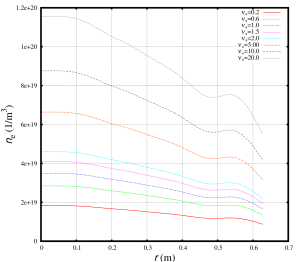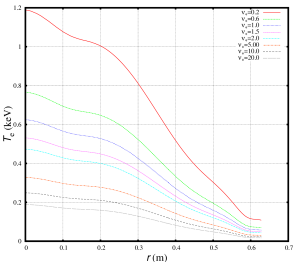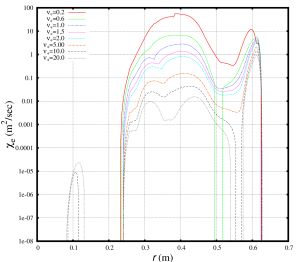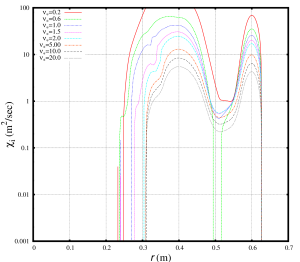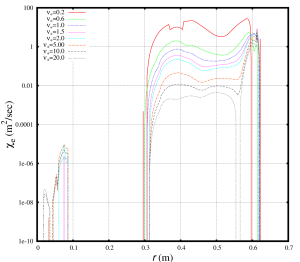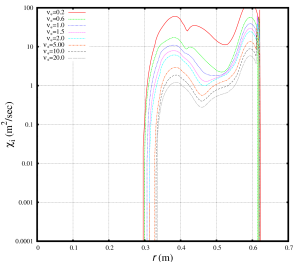Varying the collisionality for the NSTX discharges 141031 and 141040
In order keep the plasma equilibrium unchanged, the density and temperature profiles should be changed with a scaling factor :
where the indices , and
stand for electrons, ions, impurities and fast particles correspondingly. The plasma pressure,
, normalized gradients and scale lengths as well as ratio of the electron to ion temperatures will remain unchanged.
The plasma collisionality for the NSTX discharge 141031 is varied from 0.2 to 20 from the original plasma collisionality. The density and temperature profiles in these scans are shown below:
It has been found that increased collisionality results in smaller values of anomalous diffusivities computed with the Weiland model in MMM8.1:
The diffusivity is monotonically decreases with the collisionality. The results for the NSTX discharge 141040 are similar:
When used standalone, the Weiland model in MMM8.1 can not explain the experimental trend . However, when used in the whole device integrated modeling code, the MMM8.1 model can reproduce the experimental profiles and
trend reasonably well. The main remaining question is what are the changes in other profiles (e.g., safety factor and magnetic shear) can change the
dependence.

